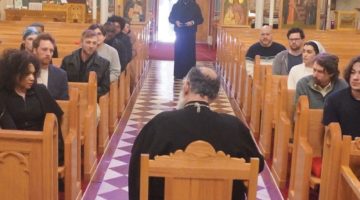ANNAPOLIS, Md. (AP) – In March 1784, a person identified as “Negro Cardy” was paid for sweeping the chimney during the construction of the Maryland State House.
About a year and a half later, records show “Negro Nathan” was paid 2 pounds and 5 shillings for cleaning rooms and making fires at the center of government in Annapolis.
Nine years after that, following the formal completion of construction, a state ledger lists someone identified as “Negro Moses” was paid for cleaning.
Cardy, Nathan and Moses are believed to have been free Black men or women – possibly freed slaves – because they were paid directly.
But their names are among the few historians have uncovered in a decadeslong search for the identities of enslaved people, indentured servants and free Black Americans who helped build the State House at the center of Annapolis, the oldest U.S. state capitol in continuous legislative use.
Constructed from 1772 to 1797, builders completed the domed structure 67 years before slavery was abolished in Maryland and 210 years before lawmakers issued issues a joint resolution apologizing for slavery.
“The likelihood is that many enslaved people worked within the building and the grounds during its history,” said Elaine Rice Bachmann, Maryand’s deputy state archivist. “But as payment for their work would likely have gone directly to the slaveholder, unless their labor is specified in the ledgers, their identities remain undocumented.”
Chris Haley, director of the Study of the Legacy of Slavery program at the Maryland State Archives, zeroes in on the word “likely.”
“It’s frustrating that people were diminished to such a degree that searching for them is so challenging and so hard,” Haley said. “However because of that, you still have hope that there will be this piece of the puzzle that you will find in an auction, in a private paper that you had no idea would exist.” So for the last 20 years, Haley has been scouring newspaper articles, census records, newspaper ads for runaway slaves, manumission deeds, coroner reports and other documents hoping to come across that missing piece.
Haley and other historians are following a paper trail to confirm what descendants of slaves have always known to be true about the State House.
They’re uncovering the role of Black people in the origin of a historic landmark, which once served at the U.S. capitol and is an enduring symbol of American freedom.
While it feels never-ending, Haley said the search “leaves your mind hopeful and your soul hopeful that if you keep searching … if you keep looking, you might find something which further clarifies and further dignifies them and confirms their existence.”
Haley is the nephew of Alex Haley, author of the Pulitzer Prize-winning novel “Roots” that traced his family story back to an enslaved African brought to Annapolis and sold, Kunta Kinte. The work, later retold in television movies and in a memorial at City Dock, is considered a turning point in appreciation for the history of Black Americans.













No Comment